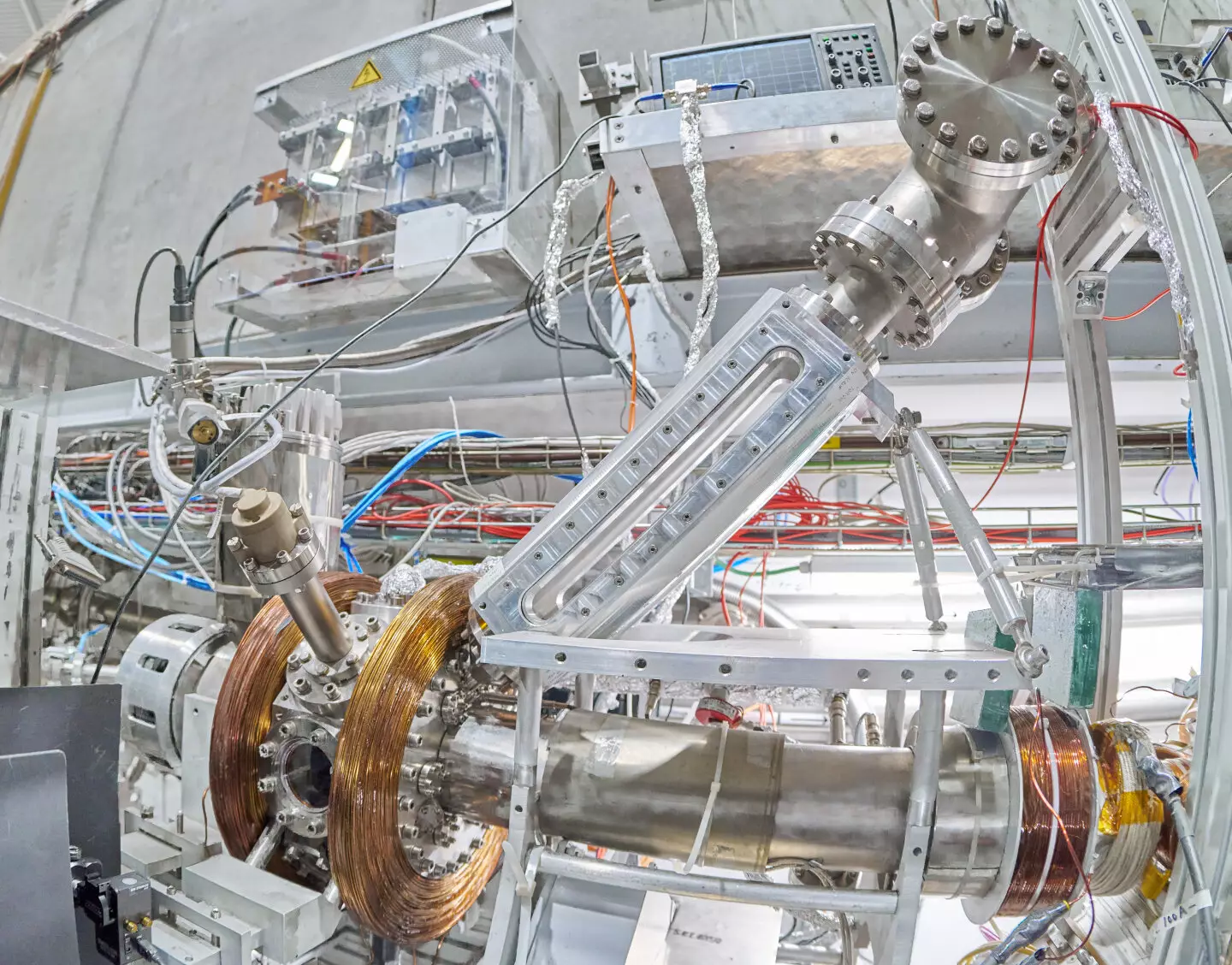In the realm of scientific research, one topic that has long captured the imagination of physicists and the public alike is antimatter. Among the various experiments conducted in this field, the AEgIS project at CERN’s Antimatter Factory stands out for its groundbreaking work in producing and studying antihydrogen atoms.
The process of creating antihydrogen within the AEgIS experiment involves directing a beam of positronium (consisting of an electron orbiting a positron) into a cloud of antiprotons that have been generated and decelerated in the Antimatter Factory. When a positronium particle interacts with an antiproton in the cloud, it relinquishes its positron to form an antihydrogen atom. This method of antihydrogen production not only allows for the study of antihydrogen but also provides insights into positronium, which is a distinct antimatter system undergoing investigation in various experiments worldwide.
One of the notable achievements of the AEgIS collaboration is the successful implementation of laser cooling techniques on a sample of positronium. By cooling the positronium sample, the team managed to reduce its temperature from 380 to 170 degrees Kelvin. This breakthrough opens up new avenues for antimatter research, enabling high-precision measurements of the properties and gravitational behavior of the matter-antimatter system. Furthermore, it paves the way for the creation of a positronium Bose-Einstein condensate, a state in which all particles occupy the same quantum state.
The implications of AEgIS’ laser cooling of positronium extend beyond fundamental physics into the realm of applied research. The creation of a positronium Bose-Einstein condensate holds the potential for generating coherent gamma-ray light through the annihilation of matter-antimatter constituents. This laser-like light could be utilized to probe the atomic nucleus with unprecedented precision, offering new insights into the fundamental nature of matter and antimatter interactions.
Notably, the AEgIS team’s approach to laser cooling differs from conventional methods by utilizing a broadband laser instead of a narrowband laser. This unique technique allows for the cooling of a significant portion of the positronium sample, enhancing the efficiency and effectiveness of the cooling process. This innovative approach demonstrates the team’s commitment to pushing the boundaries of antimatter research and exploring new frontiers in physics.
The AEgIS experiment at CERN represents a pioneering endeavor in antimatter research, with its focus on producing antihydrogen and studying positronium. The successful implementation of laser cooling on positronium opens up a wealth of possibilities for high-precision measurements and the creation of a positronium Bose-Einstein condensate. The implications of these advancements extend far beyond the realm of physics, offering a glimpse into a future where coherent gamma-ray light could revolutionize our understanding of the atomic nucleus. The AEgIS team’s innovative techniques and groundbreaking achievements position them at the forefront of antimatter research, driving forward our knowledge of this enigmatic substance and its potential applications in science and technology.


Leave a Reply